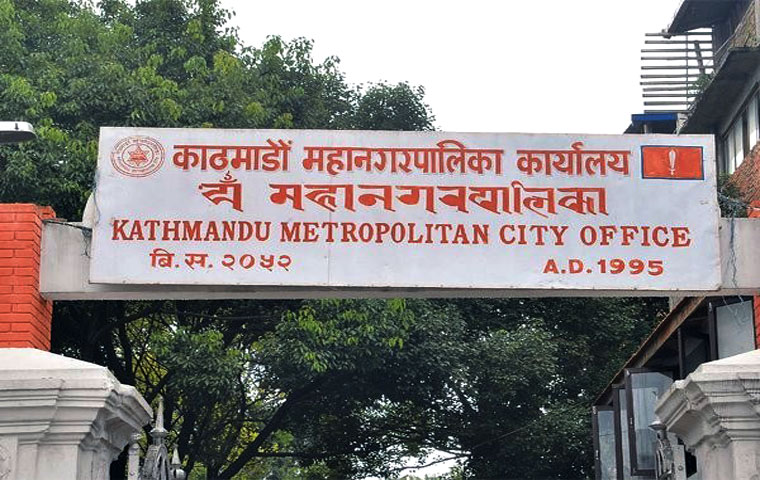
Kathmandu Metropolitan City's Bold Initiative: Empowering Public School Students Through Scholarships
In an empowering initiative for education equality, Kathmandu Metropolitan City (KMC) has announced that more than 85 percent of scholarships distributed by private schools will be awarded to public school students. For the first time, the KMC has decided to distribute scholarships based on merit and potential of the students who seek admission to private schools in class 11, conducted through a common entrance examination.
Prioritizing Public School Students
The main focus of this initiative is to provide free scholarships to those students who have successfully passed their Secondary Education Examination (SEE) from public schools. Head of KMC's Education Branch, Sitaram Koirala, revealed that the arrangement has been specifically tailored to benefit underprivileged and impoverished students from public schools.
Transforming Education in Kathmandu Metropolitan City
With approximately 50,000 students enrolled in class 11 in private schools within the KMC, the legislation mandates that 10 percent of those enrolled should be educated through free scholarships. In practical terms, this translates to nearly 5,000 students within Kathmandu Metropolitan City receiving free education in class 11 for the current academic session. Out of these, 85 percent, i.e., 4,250 public school students, are eligible for the scholarship.
Balancing Open and Reservation Quotas
Following KMC's notification, the scholarship distribution has been divided into 40 percent open and 45 percent reservation quotas. In both these quotas, only students who have been educated in public schools are allowed to compete.
Scholarship Opportunities for Specific Demographics
Under this program, 9 percent of the scholarships will be awarded to students who are permanent residents of KMC, while 1 percent will be offered to students studying in public or private schools in landfill site affected areas such as Sisdol and Bancharedanda. The remaining 5 percent will be awarded to students from all over the country who studied in private schools.
Within the 45 percent reservation quota, specific percentages have been assigned to diverse groups such as 33 percent for female students, 15 percent for Adivasi Janajati, 12 percent for Madhesi, 17 percent for Khas Arya, 9 percent for Dalits, 2 percent for Muslims, 4 percent for Tharu, 2 percent for the disabled, and 4 percent for students from backward areas or those belonging to families of martyrs, conflict victims, etc.
Criteria and Exclusions for Backward Districts
The scholarship opportunity does not extend to students who have studied in private schools, even if they originate from backward districts. Backward districts include Acham, Kalikot, Jajarkot, Jumla, Dolpa, Bajhang, Bajura, Mugu, and Humla.
Providing Free Scholarships: The Past and The Present
In the past, around 60 to 70 percent of the students selected by the school and 40 to 30 percent of students recommended by the local level were given free scholarships by the private sector. The sector did not differentiate between private and public students, however, the new arrangement has been made to benefit those who are most in need, primarily the poor and underprivileged students who study in public schools.
The Path Ahead: Application and Examination Procedure
For class 11 scholarship, the Education Department has invited applications online from Ashad 28 to Shrawan 12. Applicants can apply on the official website of the province. Admit cards can be printed online from Shrawan 18, and the exam center will be mentioned on the admit card itself. The examinations, which cover subjects like science, management, humanities, education, law, and technical fields, will be conducted on Shrawan 20th from 11 am to 1 pm.
The Resulting Impact and The Future
This initiative by Kathmandu Metropolitan City aligns with the Educational Regulations 2059 and the Provincial Education Act 2075 that stipulate that 10 percent of the students studying in private schools should be provided scholarships. This transformative step by KMC towards educational equity is expected to make a significant impact on public school students' lives, offering them opportunities previously unavailable. With regular monitoring and regulation, this could herald a new era of change in the educational landscape of Nepal.
Statistics:
| Statistics | Number/Percentage |
|---|---|
| Total students in class 11 in private schools within KMC | 50,000 |
| Legal provision for free scholarships | 10% |
| Total students receiving free education in class 11 (current academic session) | 5,000 |
| Public school students eligible for the scholarship | 4,250 (85%) |
| Scholarship distribution (Open quota) | 40% |
| Scholarship distribution (Reservation quota) | 45% |
| Scholarships for permanent residents of KMC | 9% |
| Scholarships for students in Sisdol/Bancharedanda | 1% |
| Scholarships for students from all over the country studying in private schools | 5% |
| Reservation Quota distribution: Girls students | 33% |
| Reservation Quota distribution: Adivasi Janajati | 15% |
| Reservation Quota distribution: Madhesi | 12% |
| Reservation Quota distribution: Khas Arya | 17% |
| Reservation Quota distribution: Dalits | 9% |
| Reservation Quota distribution: Muslims | 2% |
| Reservation Quota distribution: Tharu | 4% |
| Reservation Quota distribution: Disabled | 2% |
| Reservation Quota distribution: Backward areas, martyrs/disappeared, conflict victims | 4% |
| Minimum qualifying marks for scholarship exam | 40 marks |


